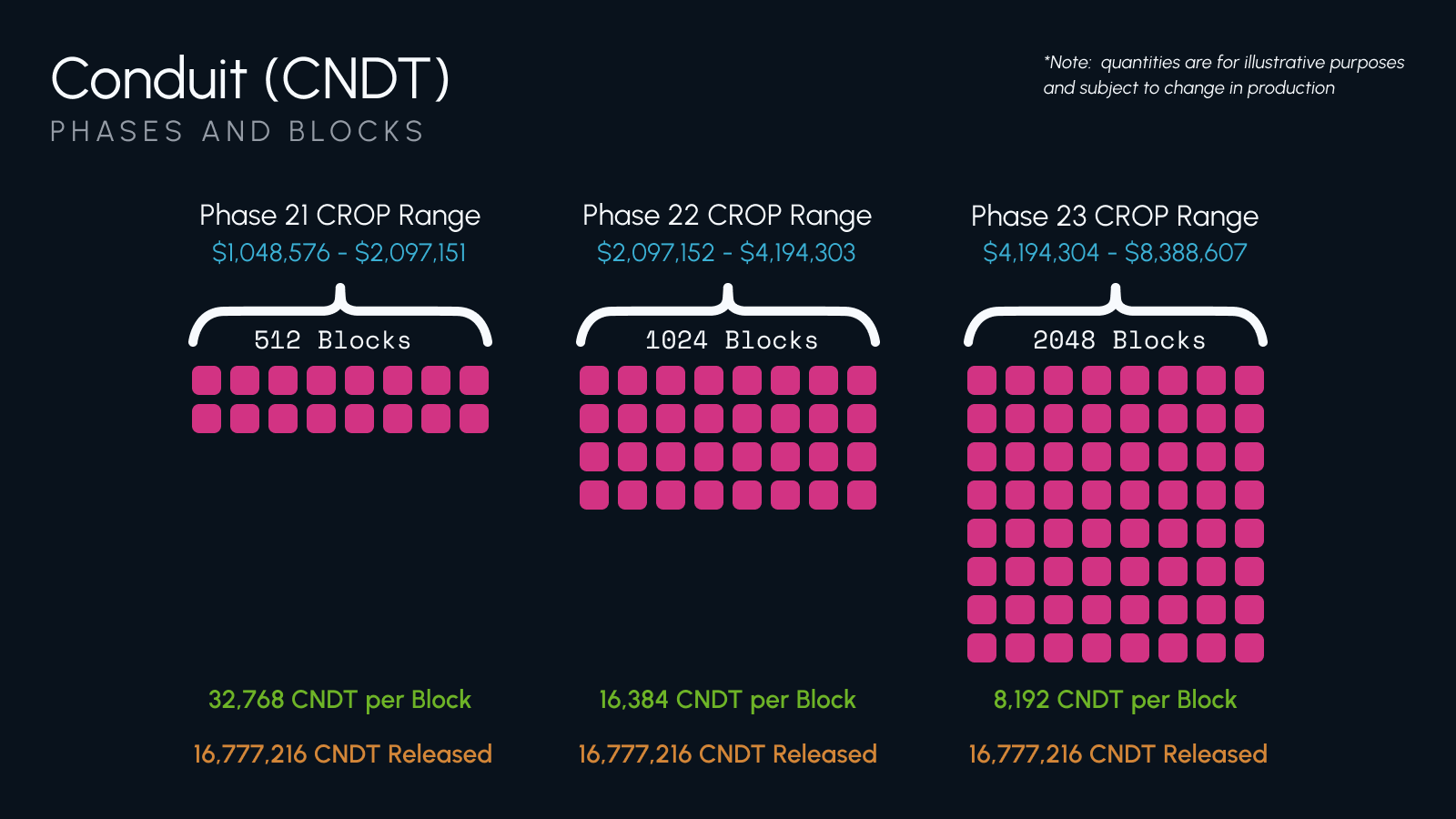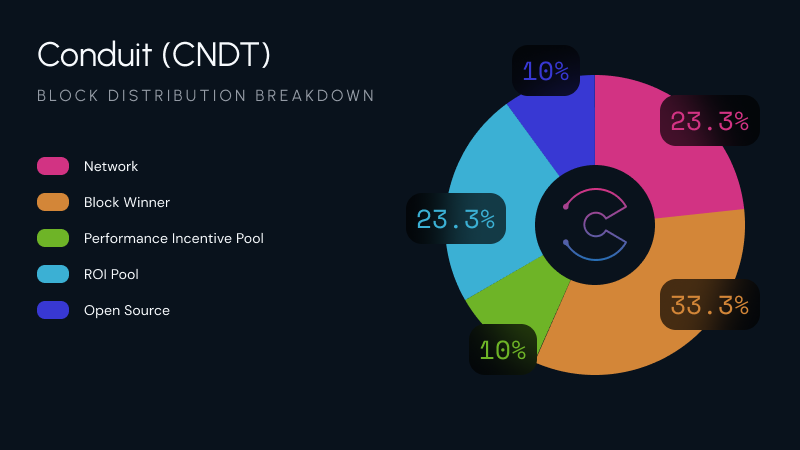Conduit Rewards System
Conduit implements a multifaceted rewards system for many different types of participation in the network, with the goal to create a secure decentralized network for both Web 2 and Web 3, owned by its operators, creators and users.
The Conduit Rewards System adopts the term "mining" as aspects of the mechanics of how CNDT tokens are released resemble proof-of-work. A more accurate way of describing how tokens are released in the Conduit Network is "proof of economic activity". Conduit Network measures economic activity by a metric called CROP, which like "gas", is collected on every economic transaction, but unlike "gas", is used to Mine CNDT, the native token of the Conduit Network.
Mining on the Conduit Network is governed by a block release schedule that is divided into Phases representing thresholds of overall Conduit Network economic activity (think GDP), with a predetermined number of Blocks per phase. Each Block contains a predetermined amount of CNDT, based on which Phase the block is in.
When blocks are Mined by users, the released CNDT is distributed according to a set of distribution tables, often called "pools". These pools are designed to simultaneously reward parties for participating economically (contributing CROP), support the network, and incentivize additional economic and network activity. Distribution tables can be and often are nested and can be subject to Conduit Network protocols and governance, as well as contracts between parties. The following image is an example of the top-level distribution pool for the Conduit Network.
This serves as a high-level overview of how the Conduit Network Rewards System works. Additional pages of documentation will explore the topics of CROP, Mining, and Block Distribution.

